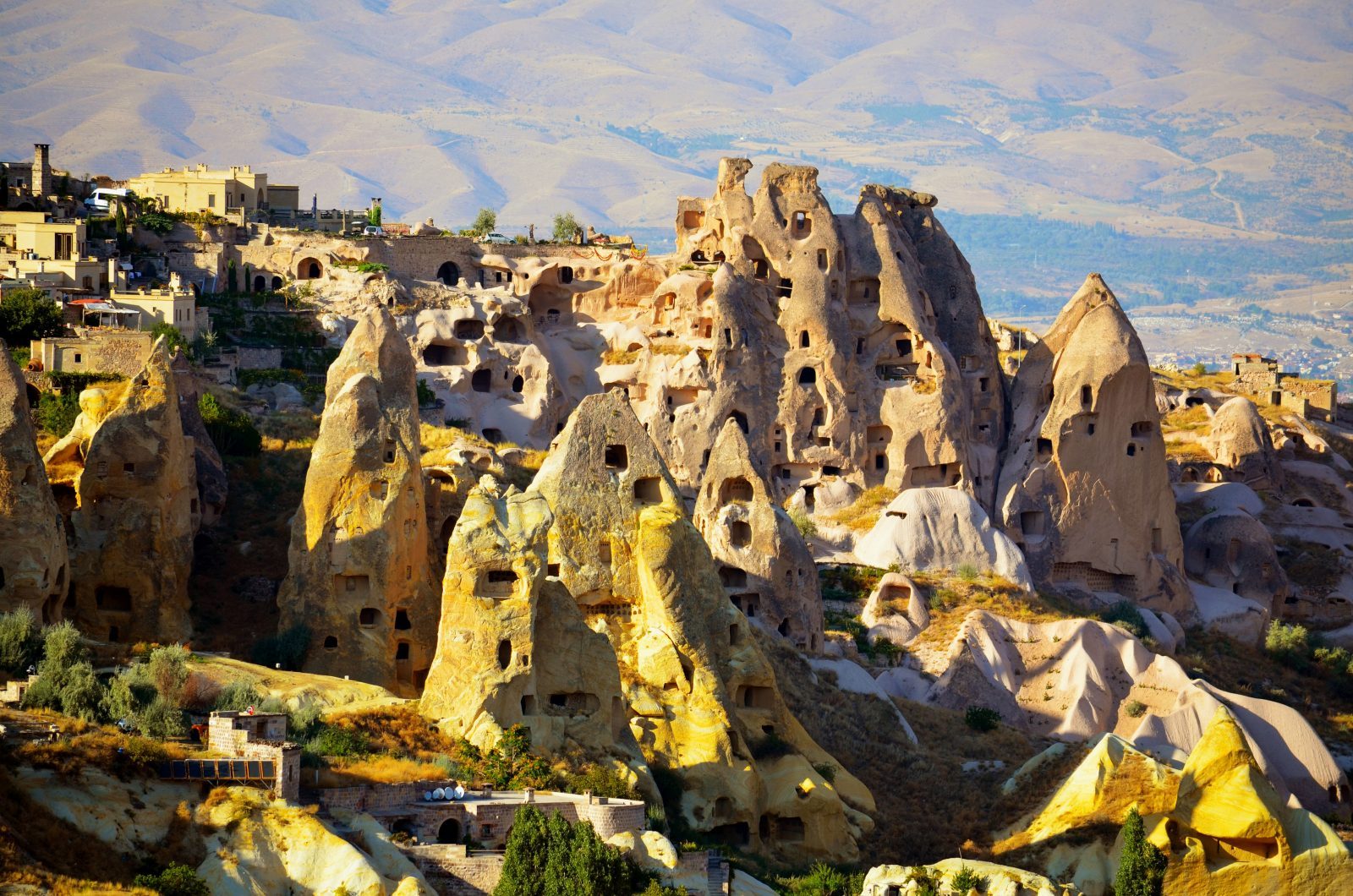Kapadokya
 Kapadokya (Cappadocia) Hakkında İngilizce Bilgi
Kapadokya (Cappadocia) Hakkında İngilizce Bilgi
Cappadocia, ancient district in east-central Anatolia, situated on the rugged plateau north of the Taurus Mountains, in the centre of present-day Turkey. The boundaries of the region have varied throughout history. Cappadocia’s landscape includes dramatic expanses of soft volcanic rock, shaped by erosion into towers, cones, valleys, and caves. Rock-cut churches and underground tunnel complexes from the Byzantine and Islamic eras are scattered throughout the countryside.
Neolithic pottery and tools found in Cappadocia attest to an early human presence in the region. Excavations at the modern town of Kültepe have uncovered the remains of the Hittite-Assyrian city of Kanesh, dating from the 3rd millennium BCE. The tens of thousands of clay tablets recovered from the remains of an Assyrian merchant colony at Kanesh are among the oldest written documents discovered in Turkey.
History
 The earliest appearance of the name of Cappadocia dates from the 6th century BCE, when Cappadocia’s feudal nobility was dominated by a Persian satrapy and Zoroastrian temple cults were widespread. Because of its rugged terrain and modest agricultural output, the area remained underdeveloped in antiquity, with only a few significant cities.
The earliest appearance of the name of Cappadocia dates from the 6th century BCE, when Cappadocia’s feudal nobility was dominated by a Persian satrapy and Zoroastrian temple cults were widespread. Because of its rugged terrain and modest agricultural output, the area remained underdeveloped in antiquity, with only a few significant cities.
Alexander the Great
Alexander the Great bypassed Cappadocia but sent troops under his general Perdiccas (322 BCE). After a power struggle following Alexander’s death, Cappadocia fell into the dynastic orbit of the Seleucids, although a local aristocracy descended from the Persian satraps continued to rule and Persian religious practices persisted. Cappadocia transferred its allegiance to Rome after the Roman victory at Magnesia (190 BCE). Remained faithful despite the Pontic and Armenian attacks of the 1st century BCE. Cappadocia was retained as a Roman client state until Emperor Tiberius annexed it in 17 CE for its command over strategic passes in the Taurus Mountains.
Popular Destinations
Hotels in Istanbul









